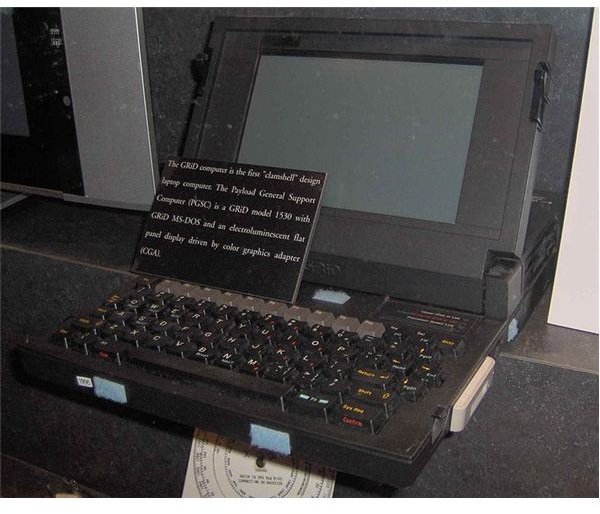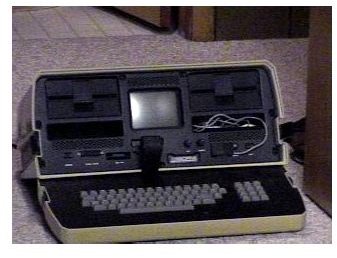Laptop Computer History - Who Invented the Laptop?
Going from Enormous to Portable
The early history of computers is concerned with machines that filled whole floors of buildings and did about as much as a cheap calculator does today. However, it didn’t take long before people began to dream of machines that you could take with you to perform calculations in places that you couldn’t take a standard machine. It wasn’t until the power and potential of the machines reached the level adequate for personal computing that the first laptop was created. The transition from a PC to a laptop was only a matter of design. The first examples may have been rather bulky things to carry around with you but the idea was quick to develop. Computers progressed to this stage in the very early 1980s, and so along came the first laptop.
The Osborne 1
The Osborne 1 is generally considered to be the first true portable computer. It was released in April of 1981 at a price of US$1795. It weighed 23 lbs so it was hardly something you’d want to lug around most places. Its data capabilities were extremely limited and its screen was only 5 inches big. Produced by the Osborne Computer Corporation, this little computer did support basic word processing, spreadsheets, and it had the capability to read several of the early programming languages. To get a feel of its capabilities, these are the specs (from the manual, as posted on the Wiki).
- Dual 5¼-inch, single-sided 40 track floppy disk drives (“dual density” upgrade available)
- 4 MHz Z80 CPU
- 64 kilobytes main memory
- Fold-down 69 key detachable keyboard doubling as the computer case’s lid
- 5-inch, 52 character × 24 line monochrome CRT display, mapped as a window on 32 x 128 internal video memory
- IEEE-488 port configurable as a Parallel printer port
- RS-232 compatible 1200 or 300 baud Serial port for use with external modems or serial printers
The Osborne 1 was a success at first, selling 10,000 units a month at its high point. However, due to other companies entering the market and some poor timing on announcing their upcoming machines, the Osborne Computer Corporation went bankrupt in 1983.
Grid Compass

Many people contend that the Osborne 1 isn’t a true laptop because of its bulk and weight. It was a portable computer but not something worthy of the name “laptop,” particularly since it still had to be plugged in and set up much like any other personal computer. The next contender for the title of “first laptop” then is the Grid Compass. Introduced in April 1982, this was the first computer to feature the now standard fold-down design. It was designed and created by a British industrial designer named Bill Moggridge, who now runs a computer consulting firm in Silicon Valley. While the Grid Compass would set the stage for future folded-style laptops, it didn’t sell very well at all. It carried a $10,000 price tag and only had limited proprietary software which made it a difficult sell, to put it mildly. However, it patented many of its innovations, garnering its company Grid Systems Inc, a fair share of profit. In 1988 the company was acquired by Radioshack.
Epson HX-20
Because the Grid Compass didn’t sell well

many look to the next portable computer to apply the label of “first laptop.” Next is the Epson HX-20. This was the first true “laptop” that could be transported, run on batteries, and set on your lap for use. First sold in early 1983, this laptop was even more limited in many ways than its predecessors, but it was fairly inexpensive and the portability added by the use of batteries was an incredible advance.
Gavilan SC
One last computer we must mention is the Galivan SC, which was the first computer to ever be marketed as a “laptop.” Released in May 1983, this computer featured a fold down design taken from the Grid Compass and ran on nickle-cadmium batteries similar to the Epson. It had an unusually long screen (400 x 64 pixels) and, significantly, ran on MS-DOS, one of the first portable computers to do so.
Further reading:
And there we have the contenders for the earliest laptops. For further reading see:
https://www.randomhistory.com/1-50/006laptop.html
